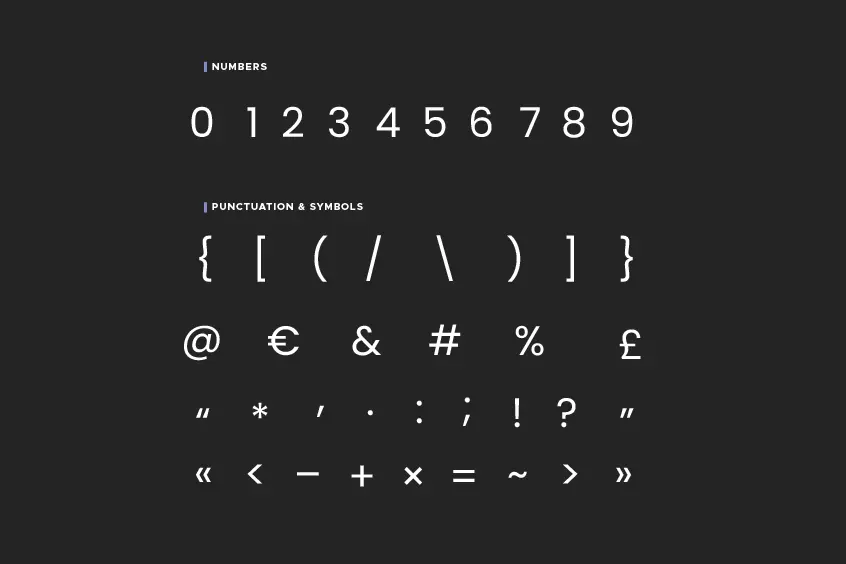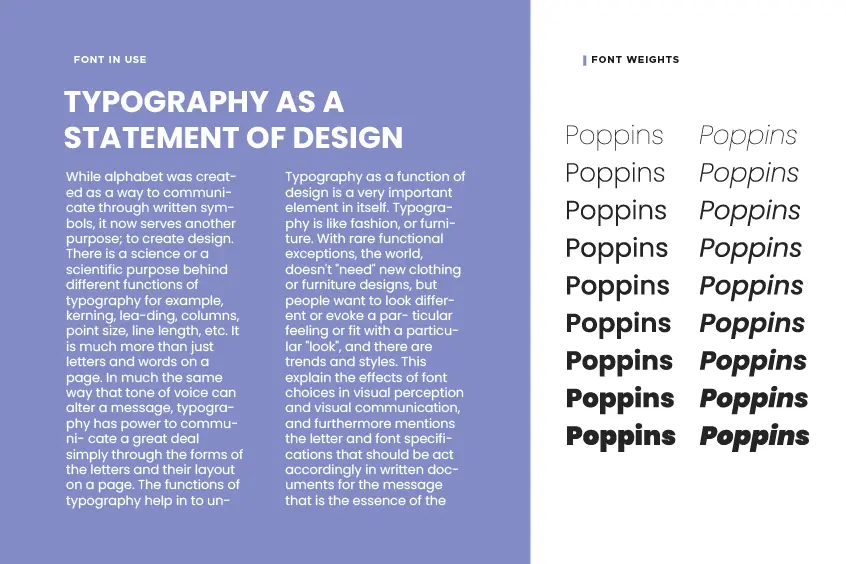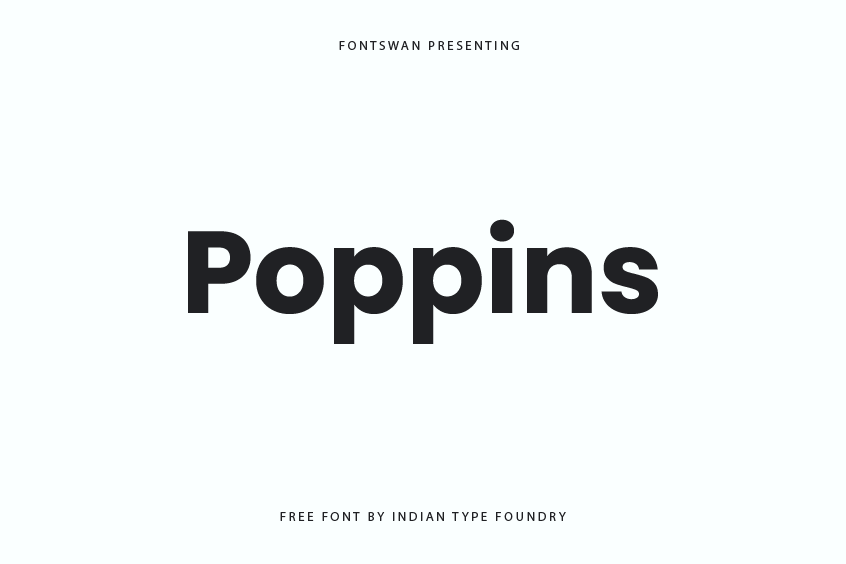



About Poppins Font
The Poppins Font is an exceptional typeface family that boasts a diverse range of nine weights, varying from the delicate Thin weight to the bold Black weight. Each font in this versatile family is equipped with an impressive 1060 glyphs. Poppins is a pioneering typeface that presents a monolinear style within a Devanagari-type family. The intricate Devanagari script was designed by the talented Ninad Kale, while the Latin script was masterfully crafted by Jonny Pinhorn. Since its initial release in 2014 by the Indian Type Foundry, Poppins Font has become a widely utilized typeface, gracing over 3,200,000 websites and virtual projects globally.
Poppins Font has earned the distinction of being classified as a Geometric Sans Serif typeface due to its nearly uniform shape, with only minor modifications made to the stroke joints to produce a uniform stroke weight appearance. The Latin script in Poppins features an impressively high x-height, setting it apart from other Devanagari typefaces.
The Devanagari script, also known as Nagari, is the alphabet used by over 120 languages in India and Nepal. This script is read from left to right and features circularly symmetrical shapes, making the monolinear style of Poppins an ideal match. In Poppins, the character height of the Devanagari script is equal to the height of the Latin ascender, with the capital letters of the Latin script being shorter in comparison to those of the Devanagari script.
The Devanagari script, like the Latin script, is founded on a monolinear geometric structure, with the designer’s focus centered on creating symmetrical shapes for the characters, particularly the circle. Poppins is a newcomer in the world of geometric sans-serif typefaces, but it sets itself apart on a global scale, offering a fresh take on a timeless design tradition.
Characterizing the Features of the Poppins Font
The Poppins Font is renowned for its distinct and uniform glyph design, featuring a straight main shaft with a consistent stroke width throughout the format. However, the points of conjunction in the font exhibit a subtle deviation from this uniformity, with a slightly thinner stroke than the main shaft.
The bars of the glyphs in Poppins Font are also designed to be slightly less thick than the main shaft, both in their high and low iterations. The glyphs feature flat bases without any angularity and straight apices that remain constant across the entire font, regardless of the selected serial range.
The Poppins Font’s typography has been carefully crafted to facilitate easy reading, especially in digital media. Its design showcases a more prominent middle eye in comparison to the upper and lower eyes, with the ascending stroke being shorter than the descending one. This intentional design choice contributes to the font’s readability by providing a clear visual distinction between letters.
The vertical adjustment and contrast at the points of the conjunction of the lows in Poppins Font are exemplified by its closed and open curved antlers. The closed curves, such as “a,” “b,” “d,” and the ring of “g,” have more prominent white space on the right side of the glyphs, contributing to their visual appeal.
The highs in the Poppins Font are monolinear glyphs, characterized by a consistent stroke width throughout the format. However, there is a slight deviation from this mono linearity in the oblique horizontal axis of ascending and descending diagonal strokes, which are slightly thinner than the main vertical axis, as seen in the letter “M.”
In contrast, not all of the low-case letters are monolinear in the Poppins Font, with some looped or ring glyphs exhibiting a variation in stroke thickness. However, the majority of low-case letters, with some exceptions like the “o,” maintain a uniform line throughout the format by being monolinear.
The arm of the letter “Q” in Poppins Font descends below the baseline, but it does not touch the lower line of the lower eye, thereby highlighting the greater height of the descendants of the low-case letters compared to their horizontal axis. The centerline of the highs is also placed one-third higher than half the x-height that governs the lows, further emphasizing its distinct design features.
Poppins Font Pairing
When selecting a font to pair with Poppins, it is important to consider its unique characteristics such as its geometric structure, and sans-serif style. To create harmonious typography, a complementary font with similar or contrasting qualities can be chosen. Some font pairing options that complement Poppins will include:
It is essential to remember that while these font pairings may work well together, the final decision should be based on the specific design requirements and aesthetic goals of your project.
Poppins Font Free Download License
The Poppins font has been granted a license under the Open Font License. This means that it is available for use in a multitude of applications, both personal and professional, and can be utilized in both print and digital mediums, regardless of the commercial purpose.
To further support the growth and development of this font, individuals are encouraged to visit the repository hosted on Github at github.com/itfoundry/poppins, where they can contribute and partake in the maintenance and improvement of the font.
Conclusion
In summary, Poppins exemplifies a multifaceted and contemporary typeface that aptly complements a diverse range of design endeavors. Its immaculate and uniform aesthetics render it a favored selection for brand identity, digital platforms, and print creations. Boasting compatibility with numerous scripts and typographic weights, Poppins serves as an exemplary choice for designers in pursuit of a dependable and adaptable font family.
